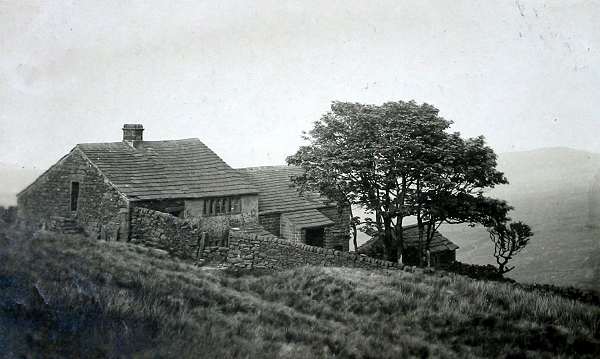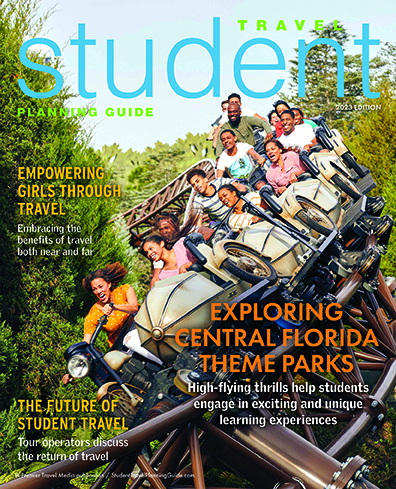Take a trip where the literature comes to life in ways never thought possible. The sprawling landscapes and ominous castles described in 19th century literature will manifest themselves before your students’ eyes on an adventure steeped in culture, history, art and, above all else—literature. You and your students will leave England with an understanding of the English landscape, a rejuvenation for classics, a fascination with the writing process and inspiration from the great authors of the 19th century.
But before you hop across the pond to explore literary lore, here are some cultural tips:
Keep in mind that England generally runs on the 24-hour way of telling time (otherwise known as military time). To keep you from missing your 18:00 tour, download the Military Time app and by the end of your stay you should have it down pat.
Transportation in England can be a bit tricky and expensive. As you may know, the Brits drive on the opposite side of the road, 90% of cars are stick shift, and both gas and car rental are extremely expensive. If you fly into London we recommend either using rail services or a coach service to take your group around to these locations:
The Gothic City Behind Dracula – Whitby
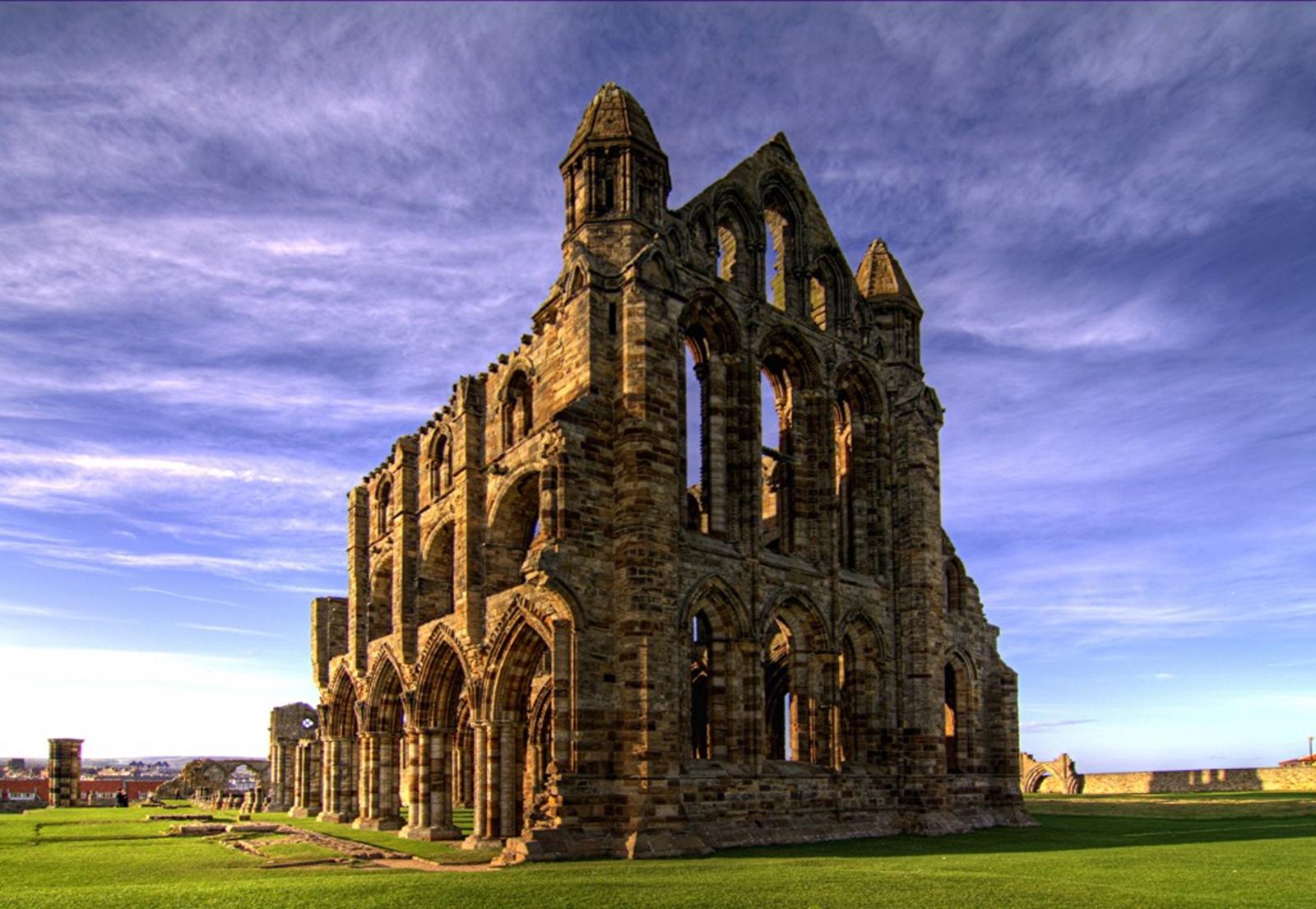
Whitby Abbey. Credit
Bram Stoker’s 19th century classic horror novel Dracula may be more than fiction. Prior to writing the novel Stoker took a vacation to the town of Whitby in northeast England. With its misty winding streets, diving bats and stone-faced, Gothic architecture, the town was the perfect eerie place for Dracula to take form. Whitby is even directly referenced in the novel: “Right over the town is the ruin of Whitby Abbey, which was sacked by the Danes, and which is the scene of part of ‘Marmion,’ where the girl was built up in the wall. It is a most noble ruin, of immense size, and full of beautiful and romantic bits; there is a legend that a white lady is seen in one of the windows.” (Dracula, 1897).
Stoker even researched at the Whitby Library, where he fell across the name of his famous antagonist “Dracula.” Whitby Abbey, the looming skeletal remains of a once robust stone abbey, overlooks the city and is where Dracula climbs the 199 steps to the ruins. When visiting Whitby, be sure to explore the Abbey, Whitby Library and eerie St. Mary’s Churchyard. And do take part in the Bram Stoker Guided Dracula Experience.
Jane Austen’s Posh Playground – Bath
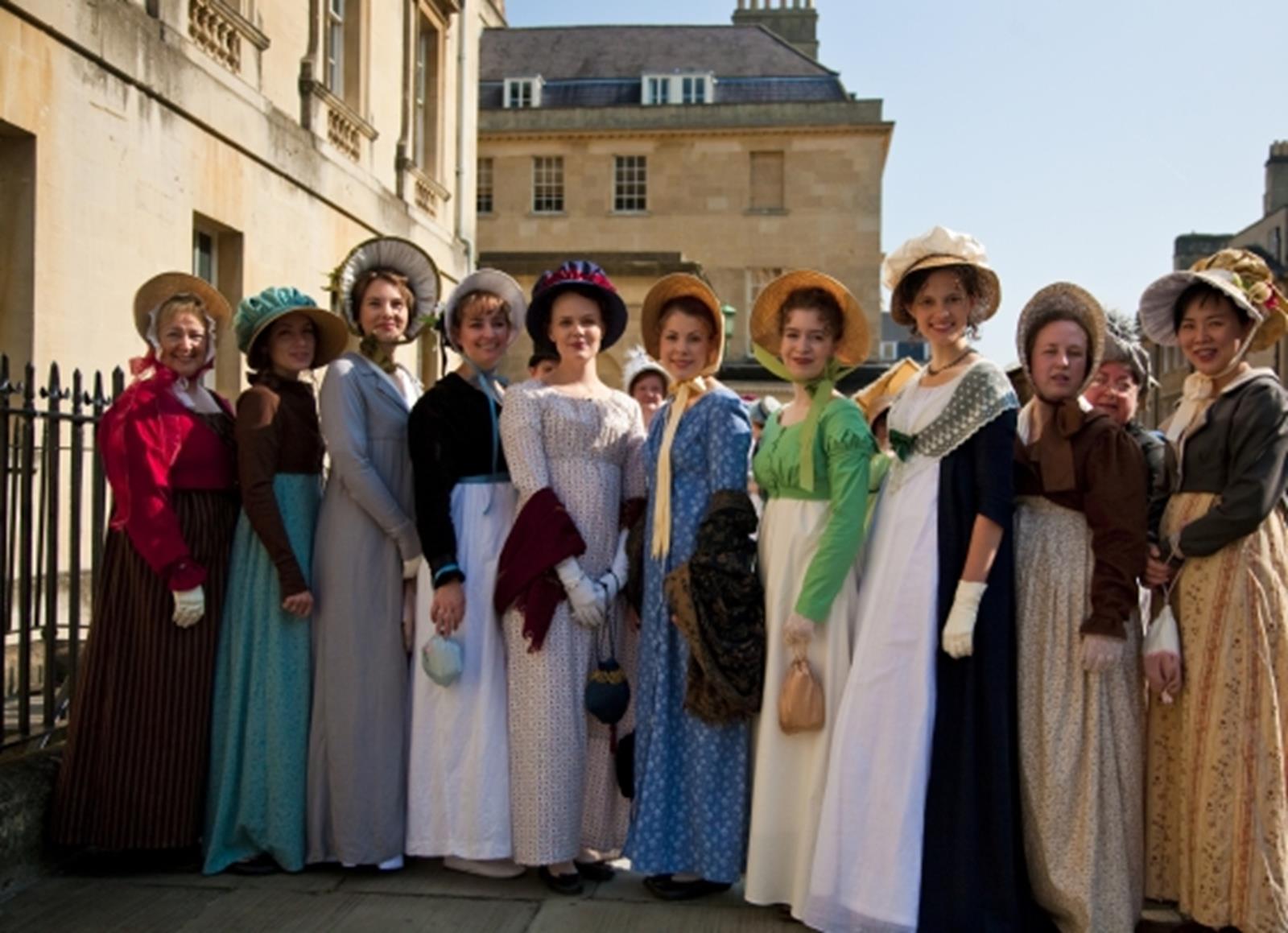
Jane Austin Festival, Bath. Credit
Jane Austen, a resident of Bath from 1801-1806, explicitly set two of her famous novels, Northanger Abbey and Persuasion in the upscale city. Your group can get the full Austen experience in Bath today. The Jane Austen Festival in September offers a chance to attend etiquette classes, dancing lessons and more. Visit the public Assembly Rooms, where great balls were held in Austen’s day, much like those fanciful dancing and courting scenes in her books. Your group can take a stroll on Gravel Walk to Georgian Garden, where a heartwarming love scene takes place in Austen’s Persuasion. We encourage you to lodge in Jane Austen fashion at the Number 4 Sydney Place or Royal Crescent Hotel. Download the free Jane Austen walking tour for you and your group here: http://channels.visitbath.co.uk/janeausten/audio-tour and learn more about Jane Austen group visits here: http://www.janeausten.co.uk/the-jane-austen-centre/group-visits/.
The Bronte Sisters’Landscape – West Yorkshire
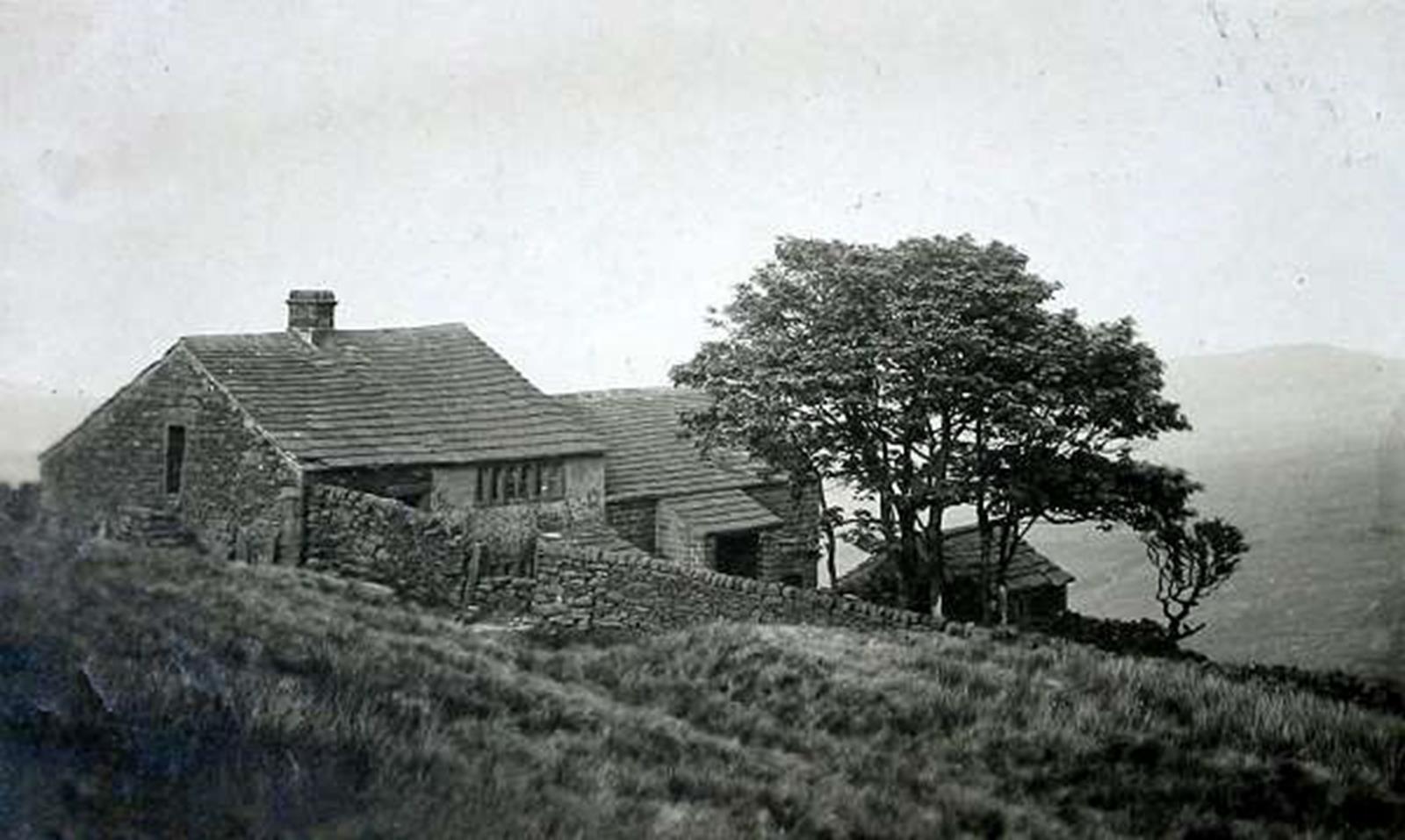
Top Withens. Credit
West Yorkshire is affectionately known as “Bronte Country.” Famous sisters and authors Charlotte and Emily Bronte lived there in the 19th century and supposedly drew much inspiration for their famous novels. In Haworth, the great wild moorlands are the scenery that evoked Emily to pen Wuthering Heights. Located in Haworth Parsonage is an ancient crumbling farmhouse called Top Withens that is supposedly the model for the Earnshaw home in Wuthering Heights. Although the structure does not resemble that in the novel, the stately view and somber mood do mirror the book. Ellen Nussey, a friend of the family, once mentioned that this was indeed the inspiration. Visit http://www.haworth-village.org.uk/walks/withens/withens.asp for a guide to Haworth Village and a walking tour map.
Wycoller Hall, a late 16th century manor house in Lancashire (near Haworth), is said to be the inspiration for Charlotte’sFerndean Manor in Jane Eyre. The sisters often took walks to the manor in their youth, and the crumbling façade was used on the cover of the 1898 edition. Two women murdered by their lovers supposedly haunt the ancient manor…eerie, we know. There is free public access to the Hall. Download Lancashire Travel Guide app.
And for an extra childhood favorite in Nottingham…
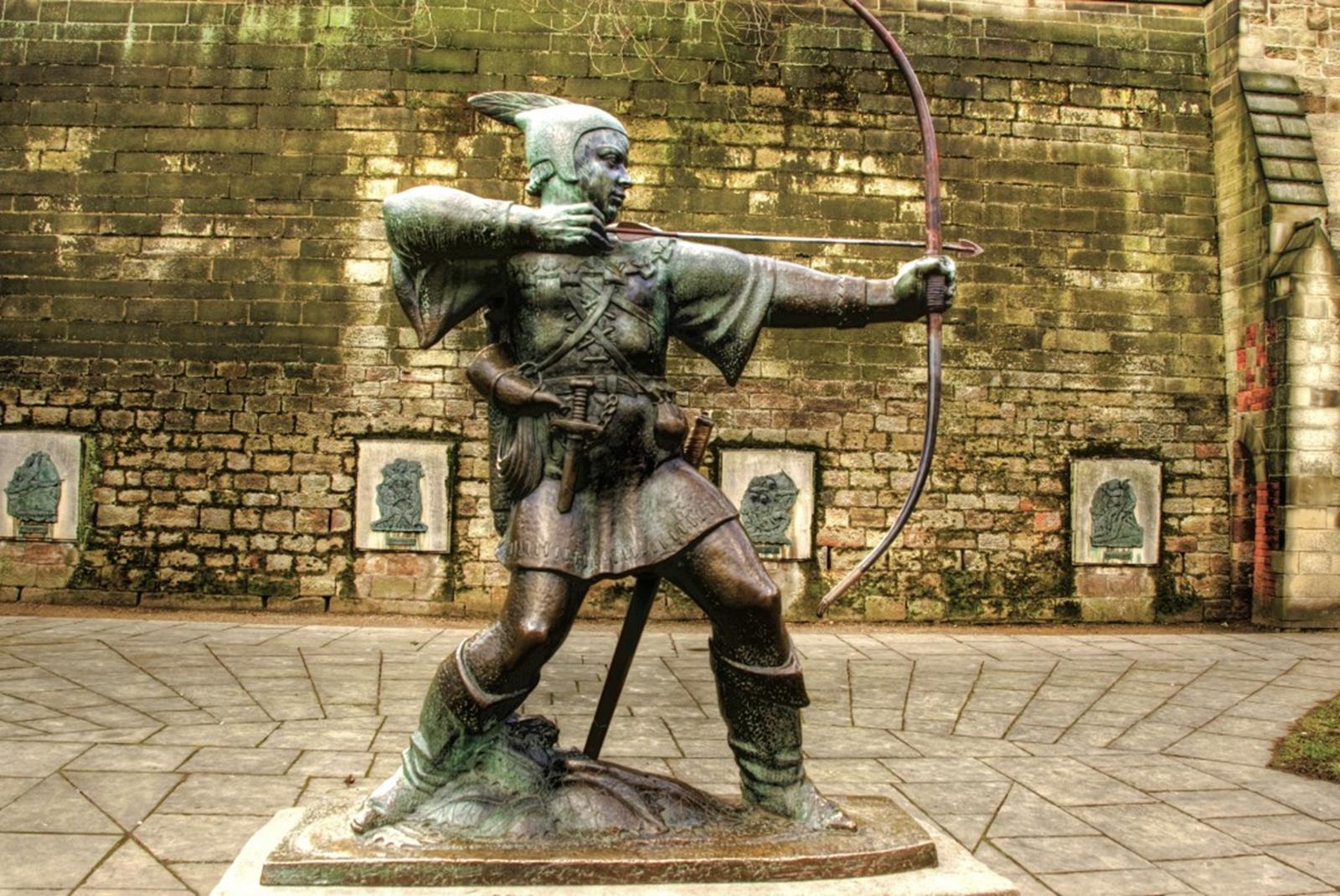
Robin Hood Statue, Nottingham Castle. Credit
Quaint forests and mystical lagoons make up the city of Nottingham, otherwise known as the real-life Neverland. Although there are no confirmed reports that Peter Pan author J.M. Barrie created Neverland as an image of the city, it is confirmed he lived there prior to writing the childhood classic. It is an adventure in itself surmising which real world elements are present in the book. The main stop to make in Nottingham is at Arboretum Park. The park is a calm oasis in the bustling city, much like Neverland is an escape from the hustle and bustle of London. The Arboretum’s pond with its low hanging branches and shallow pools bears much resemblance to the mermaid lagoon in Neverland, and the bell tower surrounded by four cannons brings to mind a pirate ship. When you and your students step into Nottingham’s Arboretum Park, have a copy of the book in tow and let your imaginations run wild as you match fiction to the oasis you stand in.
You and your students are about to embark on a literary journey of a lifetime in the heart of England. Your students will be challenged to recall the scenes and themes behind the classics, and perhaps gain a deeper understanding of what life was like for some of England’s most famous authors.
Start planning your trip at statravel.co.uk to find the best deals on transportation. For more literary tour ideas, check out http://www.visitengland.com/experience/experience-locations-have-inspired-great-literature.

